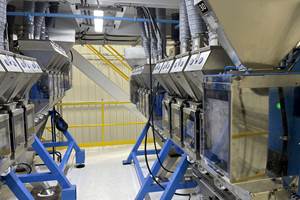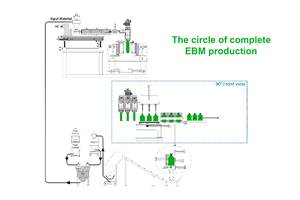NPE News Wrap-Up: Testing & Measuring Instruments
There was no shortage of new developments in product inspection devices and instruments for testing color and appearance as well as mechanical, rheological, thermal, and weathering properties.
For anyone looking to upgrade their test lab or quality-assurance facilities, NPE 2003 had plenty to offer. The show saw the debut of instruments and software for color measurement and a wide assortment of parts-inspection systems. Also showcased in Chicago were the latest instruments and software for testing a wide variety of end-use performance properties.
Color and appearance
New color instruments were plentiful, as was software that uses the internet to assist compounders and color users in specifying, communicating, and formulating color digitally and in real time. For example, X-Rite now offers an Internet module for its Color-Master quality-assurance and formulation software. Companies with many locations using the company’s instruments can access a single database via the web, even though the software is installed on a server at only one location.
As reported previously (E-Collaboration Is Coming [But More Slowly Than Expected]), new web-enabled software from GretagMacbeth provides “virtual calibration” so that different makes and models of instruments measure color to the same standards.
Both X-Rite and GretagMacbeth also unveiled new instruments. The Premier 8000 Series high-performance benchtop spectrophotometers from X-Rite are said to be the first to capture a digital image of a sample that can be viewed on a computer monitor before the instrument takes color measurements. These units can also measure samples in both vertical and horizontal orientations and are said to have excellent inter-instrument agreement.
GretagMacbeth’s new Color i 5, a sphere-based laboratory benchtop, is a mid-range system ($14,500) comparable in features to higher-end instruments (see Web-Enabled Color Measurement Harmonizes Different Instruments).
Datacolor introduced what’s said to be the industry’s first spectrophotometer designed to accurately measure metallic and pearlescent pigments as well as the new generation of diffraction-based special-effect pigments. Its MultiFX10 spectrophotometer measures these pigments at multiple angles because they look different when viewed from various perspectives. Datacolor also brought out a new line of laboratory-grade spectrophotometers (SF600X, SF450X, SF350X) in a range of prices and capabilities (see Three New Models of Lab Color Instruments).
Two new portable gloss meters (Micro-Gloss and Micro-Tri-Gloss) from Byk-Gardner have self-diagnostics that check the calibration values (see Portable Gloss Meters for Faster QC). And Minolta’s new pair of hand-held colorimeters (CR-400 and CR-410) have detachable, lightweight measuring heads (see Portable Colorimeters Fit in One Hand).
PocketSpec Technologies made its debut in this market with its $350 battery-powered, hand-held ColorQA color measurement device. It has a probe with an electro-optic sensor that permits quick quality checks of the color of molded parts (see Hand-Held Instrument for Quick Color QC).
DVT Corp. brought out what it calls the industry’s first ma chine-vision sensors with a built-in spectrophotometer for enhanced color recognition. SpectroCam is de signed for QC applications where small color variations are critical, such as auto interior parts.
For on-line color measurement and QC of products such as PVC profiles and films, X-Rite offers the new Teleflash spectrophotometer system. Measuring distance can be up to 5 ft, and the system tolerates small variations in measuring distance from sensor to sample. The system also has thermochromism compensation for color differences related to product temperature. That allows for color measurement without waiting for the product to cool and stabilize.
News in parts inspection
If you are looking for a “total quality-control system for PET preforms,” check out Agr-TopWave’s new Preformer. This system incorporates two modules in one machine. The first is a camera-based inspection module that detects a wide variety of common sidewall and base defects. The second is a leak detector that subjects each preform to a vacuum check.
A new system for vision inspection and thickness monitoring inside the blow molding machine is also available from Agr-TopWave. Combining its PETWall non-contact thickness-monitoring system with a high-precision camera-based inspection system, PETWallplus with Vision both monitors sidewall thickness distribution and detects random defects in critical areas of the seal surface and base of PET containers at speeds up to 40,000 bottles/hr.
Packaging Technologies & Inspection LLC introduced the new Pti-172 leak tester that’s said to provide 100% on-line inspection at high speed in a smooth continuous motion. Users can customize the number of test stations and choose vacuum or pressure mode. The unit is built over a conveyor and thus requires up to 70% less space than other systems. Moreover, its base price is around $30,000 vs. upwards of $50,000 to $60,000 for conventional rotary systems.
For 100% on-line inspection of film and sheet, the new Nanoman system from Nanosystems LLC utilizes one or more low-cost, high-speed “smart” cameras to detect and classify holes, contamination, gels, specks, streaks, and coating defects. It sells for around $35,000 vs. about $50,000 for competitive systems.
An in-line vision inspection system designed to detect pinholes and thin spots on multiple thermoformed trays simultaneously is new from Automated Vision Technology. TrayInspector consists of a scanner with multiple cameras, an illumination system, software, and computer (see Find Defects in Formed Trays Automatically).
Quality Station is a new line of vision inspection systems that features multi-camera capability and Plant Vision 7 software from Avalon Vision Solutions. The new software features event-driven I/O architecture that permits multiple inspection tasks to be executed asynchronously, making it feasible to inspect a variety of parts and assemblies in random order and in any lot size.
The Eagle Gel Counter is the newest web-surface inspection system from Lasor Systronics. It incorporates defect inspection, imaging, and advanced defect classification in one modular system. Special software modules can be added for specific tasks like detecting streaks, voids in coatings, and surface changes.
Measuring dimensions
Optical Gaging Products (OGP) showcased two new dimensional measurement systems for finished parts. OGP’s Cobra 3D laser scanner performs a series of linear scans of molded part dimensions. Scanned areas can be as large as 4 x 2 in. Second, the company’s Focus Contour Projector is a benchtop optical comparator with integral geometric measuring processor. A pair of bright LCD displays and the keypad are built in. This instrument has a 14-in.-diam. viewing screen and automatic lens sensing that’s said to provide error-free measurement scaling.
Agr-TopWave has a new vision-based dimensional measuring system for bottles and containers. The Vision Bottle Gauge 7000 incorporates a high-speed robotic handling system and camera imaging technology to measure and document critical dimensions of complex bottle shapes, particularly in “difficult” regions such as the neck-finish area.
Vision Engineering Inc.’s new Hawk non-contact optical measuring system comes with two- or three-axis measurement, either manual or motorized. It also offers manual or automated optical edge detection plus optional digital photo and data-storage capabilities.
The new 25MX Plus ultrasonic thickness gauge from GE Panametrics can make single- and multi-point thickness measurements on plastics and composites from one side only. Standard ultrasonic thickness measuring requires access to both sides of the part.
Orus Integration’s new MS series non-contact metrology station reportedly enables high-volume measurement of dimensions, weight, and transparency of plastic items like lids, cups, caps, and closures.
New mechanical testers
Two companies introduced new pendulum impact testers that can use either a Charpy or Izod configuration. Tinius Olsen showed its new Model IT 503 impact tester, which does not require changing the pendulum to perform the two tests. Instead, the operator attaches the appropriate striking “tup” on the pendulum and the proper specimen clamp or anvils on the base of the unit. The aerodynamically designed compound pendulum is said to give this tester maximum rigidity in the direction of the impact and to virtually eliminate any windage losses. A “low blow” feature provides an easy and reliable way to release the pendulum from a lower-than-usual height, allowing for testing at lower impact velocities and energy levels.
The Advanced Pendulum Impact device is Dynisco Polymer Test’s first Izod and Charpy impact tester. It is said to offer high rigidity and a pendulum arm with low-friction precision bearings—features that reportedly improve accuracy by avoiding unwanted energy dissipation. PLC control and menu-driven software are said to provide easy operation. It sells in the range of $25,000 to $35,000.
Com-Ten Industries’ new ball-screw-driven 700 Series variable-speed Universal materials testers have increased speed ranges. They can perform compression and tensile tests without the need for special adapters or cages.
Also new from Com-Ten is C-TAP Version 2 data-acquisition software, which includes more built-in formulas, ability to plot multiple tests on one chart, and a report-formatting wizard.
Com-Ten also offers the new ComTouch controller for automated test systems. It automatically detects sample failure and can return the tester to its original position. It measures force, deflection, and speed and can report peak or break results.
A new automatic notcher that handles up to 50 specimens is available from Ceast USA. Its Automatic Notchvis Plus utilizes a special cutting motion that reportedly reduces the friction and induced stress generated by traditional rotary notchers. Precision motor control lets you set a notch depth with resolution of 0.01 mm.
Rheological &thermal properties
A new series of melt indexers in the middle price range is available from Ceast USA Inc. Melt Flow Modular is a very simple, manual system that can be upgraded to increase automation and/or precision. It can record up to 40 independent data points in each run.
Tinius Olsen brought out a pneumatic purging device that automates cleaning of its MP600 melt plastometers. The MP600 purge system reportedly makes MFR and MVR testing nearly automatic and produces more consistent test results.
Ceast’s new Rheologic 5000 series twin-capillary rheometers can be configured with one or two barrels. Twin barrels allow the Bagley correction to be performed in one run, and they also double output by effectively combining two rheometers into one unit.
C.W. Brabender Instruments featured CANbus communications on its new ATR Plasti-Corder torque rheometer and its Intelli-Torque instrument, a recent upgrade of the Plasti-Corder torque rheometer. It has higher torque capability than the ATR model.
New Vicat testers were shown by Ceast and Dynisco. Ceast’s Vicat 500-D is said to provide higher temperatures (up to 500 C), faster automatic air/water cooling, and energy savings up to 50% compared with earlier instruments.
The Dynisco HDV3 HDT/Vicat tester is an updated unit that replaces the model HDV2. Its key improvement is in the oil bath, which is said to heat multiple samples with improved temperature uniformity from sample to sample. Upgraded software reportedly provides enhanced data capture, such as recording of sample creep over time.
Measure special properties
Thwing-Albert introduced the EJA Vantage instrument for testing tensile and adhesion properties, as well as seal strength and friction coefficient of plastic film and sheet. Its Windows-based software provides complete test control, database, and reporting capabilities.
Taber Industries’ new Model 550 and 551 Taber shear/scratch testers use interchangeable tools to measure the susceptibility of surfaces to marring, gouging, and scratching.
New touchscreen controls come with the new Ci3000+, Ci4000, and Ci5000 Xenon Arc Weather-Ometers from Atlas Material Testing Technology. The Ci series weather testers are approved by Ford Motor Co. and General Motors Corp. for conducting SAE J1885 and J1960 testing on interior and exterior automotive materials. These units reportedly use the latest water-cooled xenon-arc lamps to deliver consistent amounts of radiant exposure. Easily interchangeable glass filters tailor the light spectrum to match sunlight conditions in particular end-use environments. The new controls have increased memory and a library of standard and user-defined test programs.
Dynisco’s new LME lab mixing extruder is designed to extrude test samples from very small amounts of non-PVC developmental materials. Instead of a screw, the benchtop unit has a smooth, conical, heated rotor that processes just 5 to 10 g/hr. It sells for $10,000 to $12,000.
Dynisco also launched the LMM lab mixing molder, which uses the same plasticating rotor as the LME, but feeds the melt to a hand-operated compression mold for producing test-sample disks. This benchtop unit costs $10,000 to 12,000.
Related Content
Specialty Purging Compounds Optimize Color and Material Changeovers
Selecting of the correct purging compound can speed up material and color changeover time and reduce scrap. You’ll even save on material.
Read MoreNovel System Produces Color on Demand
Ampacet’s FluxQF technology features a quick-dispersion universal carrier with novel machinery that provides automated color blending in quantities down to 50 lb.
Read MoreTosaf’s Investments in North America Result in 40% Increase in Production Capacity
Backed by a global presence, Tosaf provides localized additive and color solutions, and services for the plastic industry in North America.
Read MoreGet Color Changes Right In Extrusion Blow Molding
Follow these best practices to minimize loss of time, material and labor during color changes in molding containers from bottles to jerrycans. The authors explore what this means for each step of the process, from raw-material infeed to handling and reprocessing tails and trim.
Read MoreRead Next
Recycling Partners Collaborate to Eliminate Production Scrap Waste at NPE2024
A collaboration between show organizer PLASTICS, recycler CPR and size reduction experts WEIMA and Conair will seek to recover and recycle 100% of the parts produced at the show.
Read MoreBeyond Prototypes: 8 Ways the Plastics Industry Is Using 3D Printing
Plastics processors are finding applications for 3D printing around the plant and across the supply chain. Here are 8 examples to look for at NPE 2024.
Read MoreFor PLASTICS' CEO Seaholm, NPE to Shine Light on Sustainability Successes
With advocacy, communication and sustainability as three main pillars, Seaholm leads a trade association to NPE that ‘is more active today than we have ever been.’
Read More




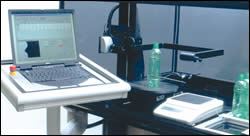
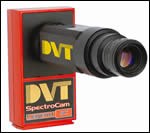




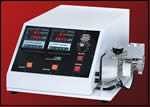














 (2).jpg;maxWidth=300;quality=90)





